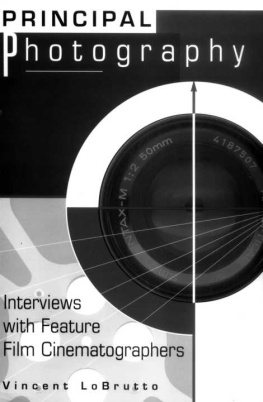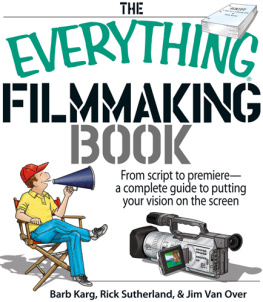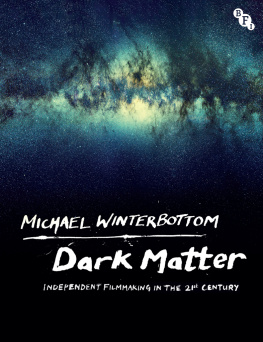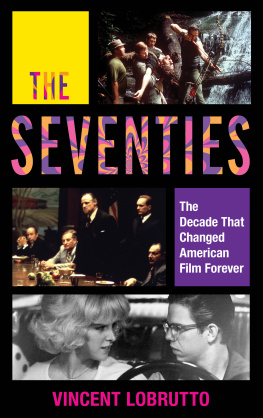PRAISE FOR THIS BOOK
There is something on every page of this book to make film lovers jump for joy. Brilliantly evoking the essence of Arthur Koestler's chance crossing of two unlikes, Making the Transformational Moment in Film packs film techniques and film theory into one seminal mashup. With Vincent Ward as his Virgil, Dan Fleming ventures below the surface of form, and guides us back to the highest function of art.
Barnet Bain, Emmy-nominated television and film producer; producer and writer (The Celestine Prophecy), executive producer (Homeless to Harvard: The Liz Murray Story), director (The Lost and Found Family), producer (What Dreams May Come)
Truly helps you see film in a new and different light.
Matthew Terry, teacher, filmmaker, screenwriter, columnist www.hollywoodlitsales.com
Like something a film school class might revolve around in its presentation of ideas, Making the Transformational Moment in Film gives another perspective on the art of filmmaking.
Erin Corrado, film columnist, musician, independent filmmaker www.onemoviefiveviews.com
Dan Fleming does what few do successfully; he masterfully blends theory with practical instruction. This is what we need: more theory books that aren't just theory for theory's sake, but actually help filmmakers think in new ways to make BETTER FILMS.
Chad Gervich, writer/producer (After Lately, Cupcake Wars, Wipeout), author of Small Screen, Big Picture: A Writer's Guide to the TV Business
PRAISE FOR VINCENT WARD'S FILMS
His images overwhelm with the power of an elusive dream we always wished was our own. As an
international director he has redefined visual story telling
(Phillip Noyce, director Salt, The Bone Collector, Clear and Present Danger, Patriot Games)
A filmmaker who combines great visuals with memorable performances
(Fred Roos, producer Tetro, The Godfather )
One of film's great image-makers
(Jay Carr, film critic New England Cable News, and past-member National Film Preservation Board)
A true visionary
(Roger Ebert, film critic)
His images have a power and strength that goes way beyond the context of the film they belong to
(Sir Peter Jackson, director Lord of the Rings trilogy)
Making the Transformational Moment In Film
Dan Fleming
Unleashing the Power of the Image
(with the films of Vincent Ward)
MICHAEL WIESE PRODUCTIONS
Published by Michael Wiese Productions
12400 Ventura Blvd. #1111
Studio City, CA 91604
(818) 379-8799, (818) 986-3408 (FAX)
www.mwp.com
Cover design by John Brenner
Cover photograph by Dan Fleming
Interior design by William Morosi and Dan Fleming
Edited by Paul Norlen
Printed by SC International
Set in Formata Condensed, a font by Bernd Mllenstdt
Contributing illustrator Thaw Naing
Copyright 2011 by Dan Fleming
All rights reserved. No part of this book may be reproduced in any form or by any means without permission in writing from the author, except for the inclusion of brief quotations in a review.
Library of Congress Cataloging-in-Publication Data
Fleming, Dan.
Making the transformational moment in film : unleashing the power of the image (with the films of Vincent Ward) / Dan Fleming,
p. cm.
Includes bibliographical references.
ISBN 978-1-61593-060-9
1. Motion pictures. 2. Cinematography. I. Title.
PN1995.F557 2011
791.43--dc23
2011017959
In memory of
The absent children of the Landschulheim Caputh 1931-1938, a lost paradise, and the school's founder Gertrud feiertag.
Dedication
To Judy Ward
(ne Edith Rosenbacher)
CONTENTS
ACKNOWLEDGMENTS
T he first acknowledgment has to go to Michael Wiese. On an azure-skied June day, I attended a forum of fifty MWP authors at the Judith Weston Studio in Los Angeles where we heard Michael describe what he wants to publish: A lot of the books have been how-to booksbut they're starting to ask the question, why are we making what we're making? That why set me on a course to what you now hold in your hands. This book is about an emerging post-classical attitude that asks why classical Hollywood narrative film has been so resistant to transformation as the world changes around it. The moment is right to be asking this.
The second kind of moment referred to in the book's title is a particular kind of cinematic moment, so I need to acknowledge the filmmakers whose creation of these moments has taught me about the possibilities: their names will emerge from the book itself. But in particular, filmmaker and artist Vincent Ward opened his life and his work to the most intimate of scrutiny, for which I am hugely grateful. The ideas expressed in the following pages are, however, my own and it should not be assumed that Vincent endorses any of them. In researching the book, I interviewed people on three continents; too many to list here but I thank them all, and again most of their names will emerge as the book proceeds. But Vincent Ward's family deserves a special mention, for generously letting me trample all over their privacy.
Michael's why was one seed for this book. The other was a moment of my own, when I happened to have on my desk W. G. Sebald's book On the Natural History of Destruction. I had just set it down in some distress after reading his account of what was found in the suitcases of women coming off a train from Hamburg in 1943.1 happened to set the book down beside an old item of film memorabilia, a German magazine called Film-Kurier, open at a film still that you'll be seeing in the Preface. Whom do I thank for that sort of juxtaposition? It will have to suffice if I thank the late Max Sebald himself, whose writings have taught so many of us to see these juxtapositions in new ways. A couple of days later I went to hear Christopher Bollas lecture at the Institute of Contemporary Psychoanalysis and most of this book's deep structure just fell into place, so I am profoundly grateful to Dr. Bollas for the dream-work.
Thanking the people who taught me filmmaking in the early years would take too long, so I will limit it to the late Barry Callaghan, subsequently course leader at Britain's Northern Film School, at whose elbow thirty years ago I spent unforgettable days on a Steenbeck editing table, before going AWOL into the nascent community video movement.
This book was a project of Mediarena, a teaching and research facility at the University of Waikato (Aotearoa/New Zealand) that supports innovative approaches to studying and imagining the cultural impact of today's media. I am grateful to the University of Waikato for the period of leave during which the book was finished, and to the university's Research Ethics Committee for approving the interview arrangements through which so much material for it was gathered. I am grateful to the staff at the Australian National Library in Canberra where an important portion of the early work was done. Editor Paul Norlen and designer Bill Morosi turned manuscript into book with extraordinary imagination and flair. It has been my good fortune to work with such an accomplished team. Thank you gentlemen.
The alert reader will soon detect my debt to David Thomson who, indirectly, introduced me to Perkins Cobb. And so it is to Cobb that the final heartfelt thank you must go. As somebody says later in the book, What the hell, I believe in ghosts.
PREFACE
You may leave the roads, or paths of high probability, and strike out over the hills of possible time, cutting through the roads as you come to them, following them for a little way, even following them backwards, with the past ahead of you, and the future behind you.
(Robert A. Heinlein,
Next page
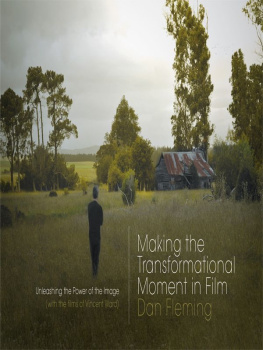
![Jon Fitzgerald - Filmmaking for Change: Make Films that Transform the World [2nd Ed.]](/uploads/posts/book/436017/thumbs/jon-fitzgerald-filmmaking-for-change-make-films.jpg)


